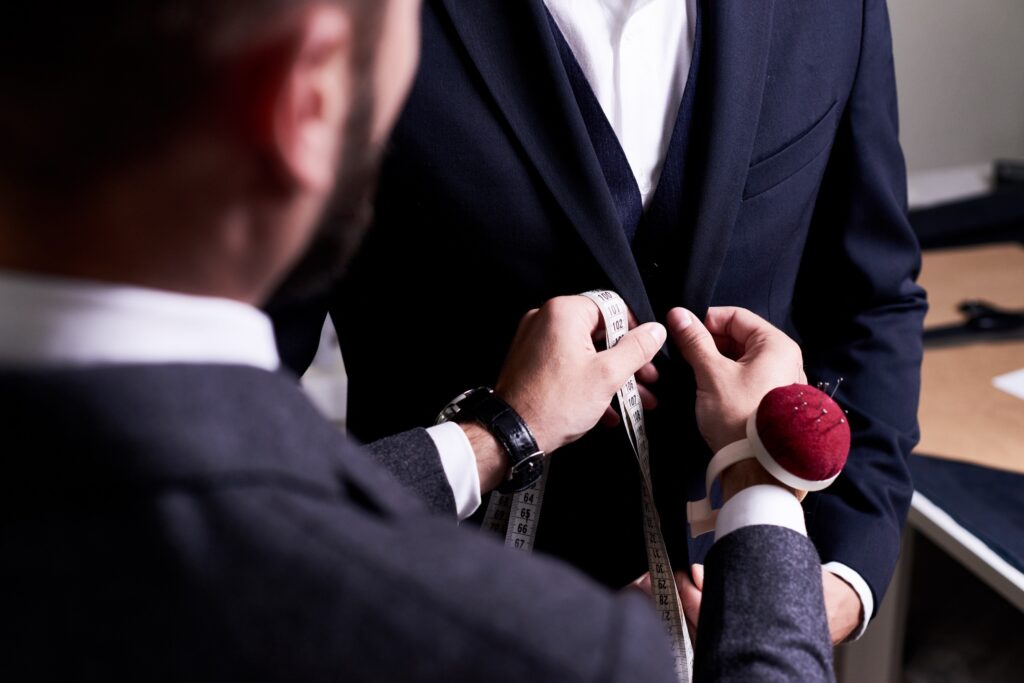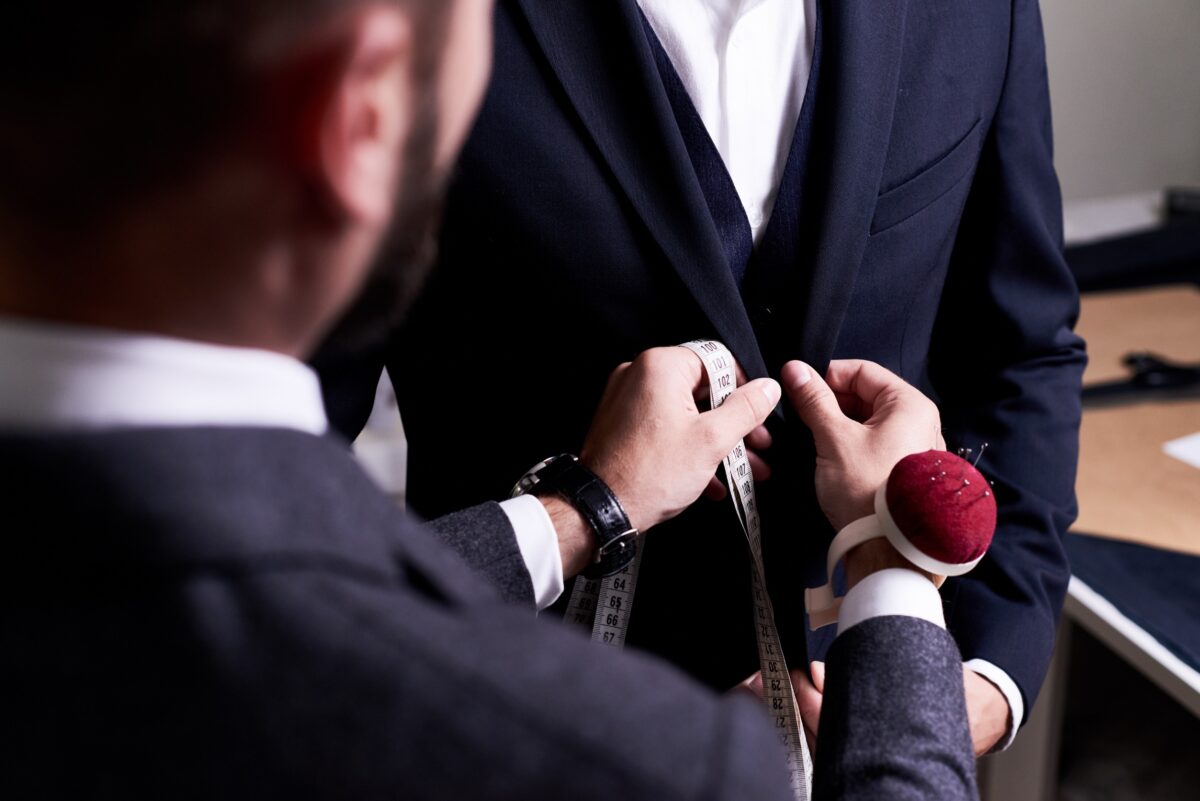The Importance of a Skilled Tailor to Bespoke Suits
In the world of fashion, a skilled tailor holds a position of immense significance. While fashion trends come and go, the art of tailoring remains timeless and essential. A skilled tailor possesses the expertise, precision, and craftsmanship to transform fabrics into perfectly fitted and flattering garments, elevating not only one’s appearance but also their confidence and self-assurance. Whether crafting custom suits, altering ready-to-wear pieces, or creating bespoke designs, a skilled tailor plays a pivotal role in shaping the fashion landscape and enhancing individual style.
Perfect Fit: Tailoring to Individual Proportions
One of the primary reasons why a skilled tailor is indispensable is their ability to achieve the perfect fit. Off-the-rack clothing may not always cater to individual body proportions, leading to ill-fitting garments that fail to flatter the wearer’s unique shape.

The bespoke suit is tailored to your body perfectly
A skilled tailor takes precise measurements and makes adjustments to ensure that each piece of clothing, especially bespoke suits, complements the client’s physique. The result is a garment that hugs the body in all the right places, enhancing natural curves and creating a polished and refined appearance.
Flattering Silhouettes: Enhancing Body Confidence
A well-tailored garment, like a bespoke suit, has the remarkable ability to enhance body confidence. By highlighting one’s best features and discreetly disguising areas of concern, a skilled tailor can create a flattering silhouette that empowers the wearer. Whether it’s a tailored blazer that accentuates the shoulders or a pair of trousers that elongates the legs, the expertise of a tailor can transform how an individual feels in their clothing, boosting self-assurance and leaving a lasting impression.
Personalization: Unleashing Creativity
Tailoring bespoke suits offers a world of personalization possibilities. A skilled tailor can cater to individual preferences, incorporating unique design elements, fabric choices, and embellishments to create a suit that reflects the client’s personality and style. From selecting the perfect lapel style on a suit to adding personalized embroidery or monogramming, the artistry of tailoring bespoke suits allows for creative expression, turning each piece into a one-of-a-kind creation that makes a statement.
Restoring and Alterations: Giving New Life to Wardrobe Staples
In addition to creating bespoke suits, a skilled tailor also excels in the art of alterations and clothing restoration. They can breathe new life into worn-out wardrobe staples by mending tears, replacing worn linings, and adjusting the fit to suit changing body shapes. With the expert touch of a tailor, beloved clothing pieces can be rejuvenated, extending their lifespan and reducing the need for constant replacements.
Tailoring Trends: Keeping Fashion Current
Tailoring bespoke suits is an integral part of the fashion industry, with tailors at the forefront of sartorial trends. They possess an innate understanding of fashion aesthetics, staying attuned to the latest styles, and incorporating contemporary design elements into their work. Whether it’s adapting classic designs to modern tastes or experimenting with innovative cuts and fabrics for bespoke suits, a skilled tailor ensures that their clients are always dressed in style.
Investment in Quality: Durability and Longevity
When it comes to investing in quality clothing, bespoke suits tailored by skilled professionals are the ultimate ally. The craftsmanship and attention to detail that go into a tailor-made bespoke suit ensure durability and longevity. Unlike mass-produced garments, bespoke suits are crafted with superior materials and construction techniques, making them resistant to wear and tear. The result is a wardrobe built to withstand the test of time, representing not only an investment in style but also in lasting value.
Wedding and Special Occasion Attire: Creating Unforgettable Moments
Weddings and special occasions call for attire that is both memorable and meaningful. A skilled tailor is often sought after for creating bespoke suits, wedding dresses, tuxedos, and other formalwear that captures the essence of the moment. By collaborating closely with clients and understanding their vision, a tailor can design garments that evoke emotions and make cherished memories for those special occasions.
Ethical and Sustainable Fashion: A Tailor’s Approach
In a world increasingly concerned about ethical and sustainable fashion, the role of a skilled tailor becomes even more significant. Tailoring bespoke suits supports slow fashion, encouraging the creation of well-crafted, timeless pieces that are made to last. By avoiding mass production and embracing craftsmanship, tailors contribute to a more sustainable fashion landscape, advocating for conscious consumption and reduced waste.
Building Lasting Relationships: A Tailor’s Personal Touch
Tailoring bespoke suits is a personal and intimate experience. Skilled tailors build lasting relationships with their clients, gaining insights into their preferences, lifestyles, and fashion aspirations. This personal touch ensures that each bespoke suit is infused with a sense of connection and understanding, making the entire tailoring journey a rewarding and memorable experience for both the tailor and the client.
Preserving Tradition: An Age-Old Craft
Tailoring bespoke suits is an age-old craft that has been passed down through generations. Skilled tailors carry on this tradition, upholding the values of craftsmanship, attention to detail, and dedication to excellence. By preserving this timeless art, tailors contribute to the continuity of an essential facet of human culture and history. In a world where mass-produced fashion often prevails, the art of tailoring bespoke suits stands as a testament to the enduring value of personalized, meticulously crafted clothing. From perfect fits to unmatched elegance, a skilled tailor shapes not just the clothing but also the confidence and charisma of those who wear their creations.




